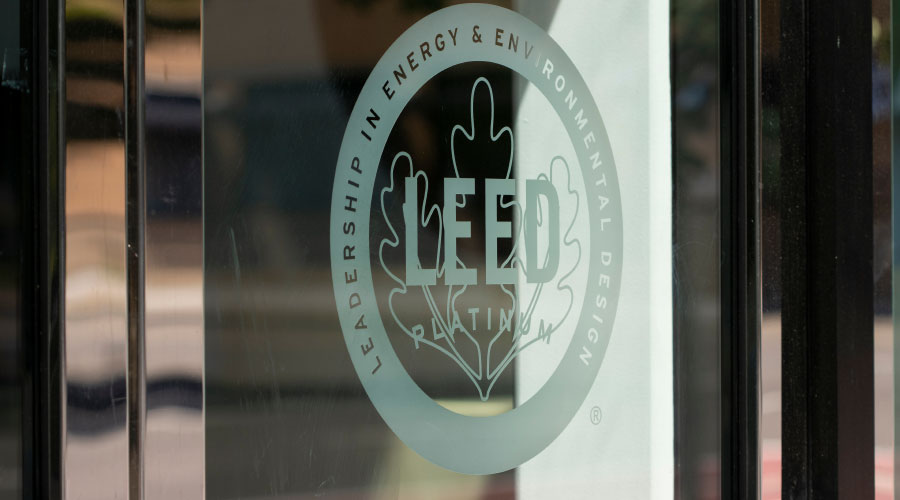Gathering Energy Data Often Most Difficult Part of Better Buildings Challenge Efforts
Getting the data, says Connolly, is the usually the most difficult. "Tenants are busy," she says. "So if you can't get the data from the utility for single-tenant buildings, which is 98 percent of the time, the data may be hard to get." For RREEF Real Estate, the Better Buildings Challenge provides incentive to re-energize its effort to collect and benchmark that data.
Indeed, the Better Buildings Challenge is a catalyst to help RREEF Real Estate augment existing energy management plans. Even though every RREEF Real Estate building is tracked in Portfolio Manager and rated with Energy Star, the Better Buildings Challenge provides cause to monitor that data more closely, benchmark and look for chances to improve. "This really gives the opportunity to take on a challenge of measuring a portfolio that is constantly in flux over several years," says Connolly. "Participation in key industry benchmarking and performance-based programs, including the Better Building Challenge, is clearly stated as one of our (organizational) goals."
Connolly says that the only hesitancy to RREEF Real Estate accepting the Challenge was that data about its buildings would be made public. "Investment managers hold financial data really close to the vest," she says. Connolly says she explained to the lawyers that in addition to the fact that when DOE reports data on the buildings, it will be anonymous, most of the data had already been reported to the BOMA Energy Efficiency Program (BEEP) anyway, and therefore was already publicly available.
Another hesitancy: "We also had to ensure that we had opportunities for greening," Connolly says. That was the case for many of the other participants as well. Given that they'd already done so much energy efficiency, would they be able to find another 20 percent? But, as most facility managers well know, there's always more that can be done.
Dig Deep
A portfoliowide challenge can make organizations dig deeper for creative solutions, says Vicki Hollon, senior vice president of innovation and quality assurance for Transwestern, one of the property manager participants of the Better Buildings Challenge. "We've been working on efficiency for so long, our efficiency gains now are the result of minor tweaks to systems."
That notion of motivation to dig deeper into energy efficiency possibilities is one reason the University of California, Irvine agreed to participate. There, "deep energy efficiency projects" — projects saving 50 percent or more — are the standing goal for every building, says Wendell Brase, vice chancellor for administrative and business services.
Two-thirds of the research university's energy use for its core academic facilities is in lab space. For that reason, the university is heavily involved in the Smart Labs program — a holistic energy-savings program tailored to lab facilities. Brase says the Better Buildings Challenge is a perfect complement to Smart Labs, as it helps ensure long-term planning. "This is not a one-year effort," he says. "Sustained effort is required." The university has 11 Smart Labs projects, which Brase hopes to collectively make its showcase project. So far only one has failed to achieve that mantel of "deep energy efficiency project" with a 50 percent cut, but Brase says he expects that one to soon.
Even though UC Irvine has been working on energy efficiency since 1991 — Brase says the university solved a mid-2000s utility deficit solely with efficiency — the university has actually made its own Better Buildings Challenge goal twice what is required: 40 percent by 2020. The reason is that the university conducts much research on climate change and alternative energy, and its goal is to put its own research into practice. Beyond that, "we totally support the President's intent to maximize the benefits of energy efficiency," says Brase. "I sat there in the meeting (prior to the announcement of the Better Buildings Challenge) and President Obama actually ran the meeting. It was clear to me that he is earnestly involved and very knowledgeable about this cause."
Related Topics:













